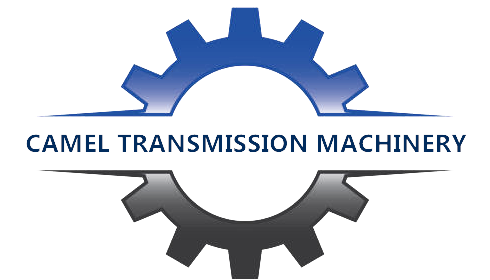
Common Problems
1. Reducer heat and oil leakage
In order to improve efficiency, worm gear reducers generally use non-ferrous metals as worm wheels and harder steel as worms. Because it is a sliding friction transmission, higher heat will be generated during operation, which makes the parts and seals of the reducer There is a difference in thermal expansion between them, which creates a gap in each mating surface, and the oil becomes thinner due to the increase in temperature, which is easy to cause leakage. There are four main reasons. One is whether the combination of materials is reasonable, the other is the surface quality of the meshing friction surface, the third is the choice of lubricating oil, whether the amount of addition is correct, and the fourth is the assembly quality and use environment.
2. Worm gear wear
The worm wheel is generally made of tin bronze, and the matched worm material is generally hardened with 45 steel to HRC45-55, and 40C: hardened HRC50-55 is commonly used, and it is ground to a roughness of RaO. 8 fcm by a worm grinder. When the reducer is in normal operation, The worm is like a hardened “file” that keeps filing the worm wheel, causing wear and tear on the worm wheel. Generally speaking, this kind of wear is very slow. For example, some reducers in a certain factory can be used for more than 10 years. If the wear rate is fast, it is necessary to consider whether the selection of the reducer is correct, whether there is overload operation, the material of the worm gear, the assembly quality or the use environment and other reasons.
3. Wear of the drive pinion helical gear
Helical gear wear generally occurs on vertical-mounted reducers, mainly related to the amount of lubricating oil added and the choice of lubricating oil. When installed vertically, it is easy to cause insufficient amount of lubricating oil. When the reducer stops running, the transmission gear oil between the motor and the reducer is lost, and the gears cannot get the proper lubrication protection, and they cannot get effective during start-up or operation. The high lubrication causes mechanical wear and even damage.
4. The bearing (at the worm) is damaged
When the reducer fails, even if the reduction box is well sealed, the factory often finds that the gear oil in the reducer has been emulsified, and the bearings have been rusted, corroded, and damaged. This is because the gear oil is It is caused by the condensation of moisture generated after the heat becomes cold; of course, it is also closely related to the quality of the bearing and the assembly process.
Solutions
1. Ensure assembly quality. Some special tools can be purchased or made by yourself. When disassembling and installing the reducer components, try to avoid hitting with other tools such as hammers; when replacing gears and worm gears, try to use original parts and replace them in pairs; when assembling the output shaft, pay attention Tolerance matching; anti-sticking agent or red lead oil should be used to protect the hollow shaft to prevent abrasion, rust, or dirt on the mating area, which is difficult to disassemble during maintenance.
2. Selection of lubricants and additives. Worm gear reducers generally use 220# gear oil. For reducers with heavy loads, frequent starts, and poor use environments, some lubricating oil additives can be used to make the gear oil still adhere to the gear surface when the reducer stops running, forming protection Membrane to prevent heavy load, low speed, high torque and direct contact between metals when starting. The additives contain seal ring regulator and anti-leakage agent to keep the seal ring soft and elastic and effectively reduce lubricating oil leakage.
3. Selection of the installation location of the reducer. Where the location permits, try not to use vertical installation. In vertical installation, the amount of lubricating oil added is much more than that in horizontal installation, which may cause heat generation and oil leakage of the reducer.
4. Establish a lubrication maintenance system. The reducer can be maintained according to the “five fixed” principle of lubrication work, so that every reducer has a person responsible for regular inspections, and it is found that the temperature rise is obvious, if the temperature exceeds 40 ℃ or the oil temperature exceeds 80 ℃, the quality of the oil decreases or the oil If you find too much copper powder and produce abnormal noise, you should stop using it immediately, check and repair it in time, eliminate the fault, and replace the lubricating oil. When refueling, pay attention to the amount of oil to ensure that the reducer is properly lubricated.
